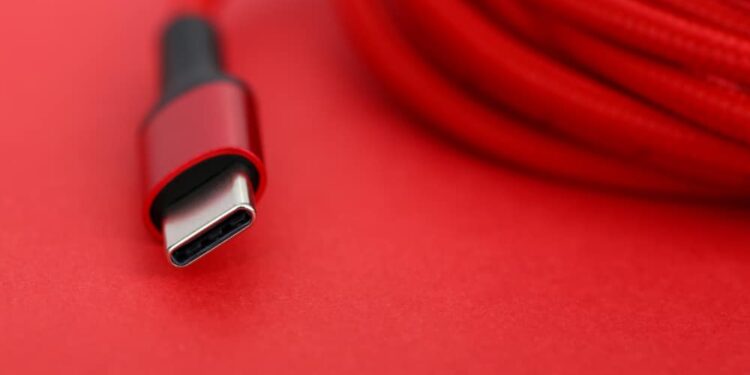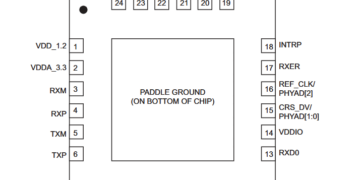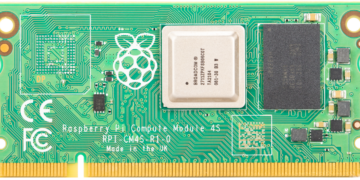
The USB-C connector standard has unified several features within a single cable, easing placement and enclosure design while providing users the ease of an all-in-one cable system. To improve performance, designers should be aware of the features of the USB-C connector standard; in doing so, design teams will understand the functional role of several sub-assemblies of USB-C and how to optimize electrical performance related to their mechanical function.
The Mechanisms of USB-C Connector Standards
USB brings power and data transmission under a single umbrella. Therefore, its construction needs to account for the integrity of both. In addition, the land pattern for a USB-C connector must follow the manufacturer’s guidelines for pin spacing and drilling locations. These mechanical features are responsible for mating and soldering with the board and influence some electrical performance characteristics.
| Mechanical item | Electrical outcome |
| Mid-plate |
|
| Ground pads |
|
| Paddle card |
|
Common mechanical USB-C connector features include the following:
Mid–Plate
On either side of the A and B row of contacts is the mid-plate, which applies impedance control in the plane normal to that of the contacts. Specifically, pins A/B 4-9 on the USB-C plug (the six centermost pins on either row) must avoid shorting to the ground during connector mating. It achieves this by extending beyond the contact surface to prevent the misinsertion of plugs or unrelated objects. The mid-plate forms connections to the ground directly and through plug side-latches to reduce the prevalence of electromagnetic interference (EMI).
Springs/Ground Pads
Internal springs aid in electromagnetic compliance (EMC) by providing a return path for current away from the receptacle and through the plug’s shell. For this reason, pin-shell path lengths must remain short to reduce the impedance. For the best performance, each pad has multiple connections to the shell.
External springs are also an option and have identical electric performance. Receptacles require a minimum of four contact points to the ground, though additional connections are acceptable. If ground connections do not proceed through the receptacle shell (e.g., no receptacle shell), then the receptacle must provide alternative enclosure means of connecting shielding pads to the ground.
Paddle Card
USB-C requires a paddle card to integrate the plug shell and pins with the wires of the cable. It is similar to a PCB local to the connector and needs to balance the interconnect requirements against performance. Due to multiple 10 GB/s differential pairs, the substrate must minimize losses with a low-Dk material. Short trace lengths for the high-speed Tx/Rx lines are also necessary. The differential pairs should also be spaced as far apart as possible on either side of the card, with two differential pairs per side.
While the connector itself is the more relevant component to layout, the cable design merits mention. Cables consist of the following four wire groupings:
- Unshielded twisted pairs for the USB 2.0 differential lines (D+/D-).
- Shielded twisted pairs, coaxial or twin-axial, for the Tx/Rx differential lines.
- Sideband signals.
- Power and ground.
Wire gauges on the power and ground lines can run anywhere from 20-28 AWG, while signal lines can utilize a smaller 26-34 AWG. The general tradeoff is between the loss associated with smaller wires and reduced flexibility with larger ones. Typically, the latter wins out for cable assembly purposes, assuming it meets all other required electrical and mechanical performance metrics.
How Connector Design Improves Electrical Performance
Connectors are electromechanical devices. Yet, it is more often the electrical functionality that layout designers gravitate toward when determining the validity of a board. The mechanical design, while integral, acts as the supporting infrastructure for electrical performance.
| Deleterious signal effect | Symptoms |
| Intra-Pair Skew |
|
| Differential insertion loss |
|
| Crosstalk |
|
There are a variety of analyses for signal integrity, and a few of the most prominent are detailed here for USB-C:
Intra-Pair Skew
Differential pairs are synonymous with high-speed signals due to the ability to establish a characteristic impedance in the lines for maximal power delivery. Beyond that, differential pairs also provide a proactive solution for unintended communication like crosstalk or EMI transceiving.
Differential pairs require minimization of propagation delay between the two wires (known as skew) to prevent the signals from moving out-of-phase to one another, reducing the amplitude of the output pulse at the subtractor and the overall noise resistance. All other parameters being equal, differential pair lines must exhibit a timing mismatch of 10 ps/m or less between line lengths.
Differential Insertion Loss
Signals experience some amount of loss traveling through a medium at different frequencies. This is dominated by skin effect losses at lower frequencies before giving way to dielectric losses at high speeds.
Notably, skin effect losses are proportional to the square root of the frequency, while dielectric losses are directly proportional to frequency. Smaller gauge wires can exhibit losses greater than -10 dB/m at significantly high speeds. Differential signals should be routed in the shortest, most direct path possible to prevent an excessive loss that can impact signal quality.
Crosstalk
Ampere’s Law states that a current in a transmission line creates a magnetic field centered about it, which can then induce a current in nearby, parallel lines. The faster the current pulse and the closer the lines, the greater the chance for coupling. Considering the number of differential pairs within a USB-C connector, there is a heightened opportunity for the differential lines to become both victims and aggressors. As with insertion loss, minimizing crosstalk must evaluate the substrate material and prioritize the routing of differential pairs.
See How Ultra Librarian Focuses Layout Design
Like most design criteria, understanding the underlying function of devices helps layout teams better engineer solutions. Incorporating the how and the why of USB-C connector standard operations leads to better performance and simplifies placement and routing. Fortunately for design teams, all this can be achieved without any time spent performing land pattern design.
Ultra Librarian creates and verifies land patterns, allowing layout designers to focus on the work they do best: optimizing layouts for clients. Regardless of what ECAD tool(s) are available, Ultra Librarian offers a library of millions of land patterns at finger’s reach.
Working with Ultra Librarian sets up your team for success to ensure streamlined and error-free design, production, and sourcing. Register today for free.








